By utilising the cloud’s power, cloud-remote maintenance technology helps businesses to remotely monitor, maintain, and oversee their operations and equipment.
Cloud technology is becoming an integral part and is integrated in most modern businesses, enabling seamless data sharing and remote access. Organisations can improve operational efficiency, predict failures before they happen, and drastically cut downtime and related costs by collecting and analysing data in real time. This strategy not only streamlines the maintenance process but also pushes businesses towards digital transformation, establishing new benchmarks for connectivity and efficiency across a range of industries.
With companies like Phoenix Contact, Moxa and Omron, key players in the field, this article provides a detailed analysis of how cloud-based remote maintenance can help organisations boost their efficiency and productivity.
Benefits of Cloud-based Remote Maintenance
Depending on the software used, the benefits of cloud maintenance can vary. However, most cloud solutions offer the following:
- Real-time monitoring and analytics – with cloud-based analytics, organisations can monitor their operations and equipment through predictive maintenance and notice any failures before they occur.
- Cost reduction – by addressing issues before they become critical, with the help of predictive maintenance, cloud-based solutions minimise equipment downtime and reduce the amount of time maintenance personnel spend on repairs.
- Improved efficiency and productivity – it is possible to access maintenance data and control systems remotely which reduce the time spent on on-site maintenance. Also, by automating routine maintenance tasks, organisations can free up their workforce to focus on more complex and value-added activities.
- Scalability and flexibility – cloud-based solutions are easily scalable and flexible to allow organisations to adapt to changing business needs and to better serve their customers. Additionally, cloud systems can be easily integrated with other systems, devices and technologies, allowing organisations to create a unified ecosystem for all their operations.
- Enhanced collaboration – shared data and global access enable stakeholders, including maintenance teams, managers and external vendors, to access the same data and collaborate effectively from multiple locations.
- Security and compliance – cloud providers typically offer enhanced data security, including encryption and access controls to protect sensitive maintenance data, additionally cloud-based systems help organisations stay compliant with industry regulations by ensuring that maintenance activities are properly documented and tracked.
- Reduced environmental impact – optimised maintenance strategies reduce unnecessary equipment operation and energy consumption.
Implementation of Cloud-based Remote Maintenance
The implementation of cloud-based remote maintenance can be easier with the help of digitalisation and other technologies.
Leveraging IoT Technology
Internet of Things (IoT) technology integration is critical to the effective deployment of a cloud-based remote maintenance solution. Sensors and actuators, which are examples of IoT devices, are mounted on machinery to collect data about performance metrics and operational status in real-time. To find abnormalities, monitor trends, and forecast equipment breakdowns, this data is sent to the cloud and processed there.
Businesses should do the following to fully utilise IoT technology:
- Ensure robust network connectivity to facilitate uninterrupted data flow to the cloud.
- Select appropriate sensors and devices that can accurately capture the necessary data.
- Implement secure data transmission methods to protect sensitive information from cyber threats.
Embracing Digital Transformation
Integrating cloud-based remote maintenance into an organisation’s digital transformation plan is an important step. It necessitates adjustments to business procedures and organisational culture in addition to technology.
In order to successfully adopt digital transformation, businesses should:
- Provide training and support to employees to help them adapt to new technologies and procedures.
- Update or redesign business processes to integrate new digital tools and data-driven decision-making practices.
- Foster an innovative culture that encourages the use of digital solutions to solve traditional problems.
How to Enable Remote Maintenance with the Cloud
The successful implementation of cloud systems requires a comprehensive strategy that includes leveraging advanced IoT technologies and embracing a broader digital transformation. This proactive approach ensures organisations are well-equipped to meet the challenges of modern industry demands whilst achieving substantial operational benefits.
It might be easier to enable remote maintenance using cloud with the help of organisations and companies that specialise in the design and implementation of remote maintenance systems. Thanks to the solutions, the maintenance engineers and technicians can now monitor and maintain their equipment remotely.
Phoenix Contact
Phoenix Contact is a global provider of industrial and electronic components and solutions. Their mGuard Secure Cloud option is a ready-to-use solution for companies seeking an intelligent and sustainable service model. It is especially useful for servicing single computers or small IP networks since it allows smooth VPN connections between service workstations and machines utilising industrial-grade routers and secure VPN clients.
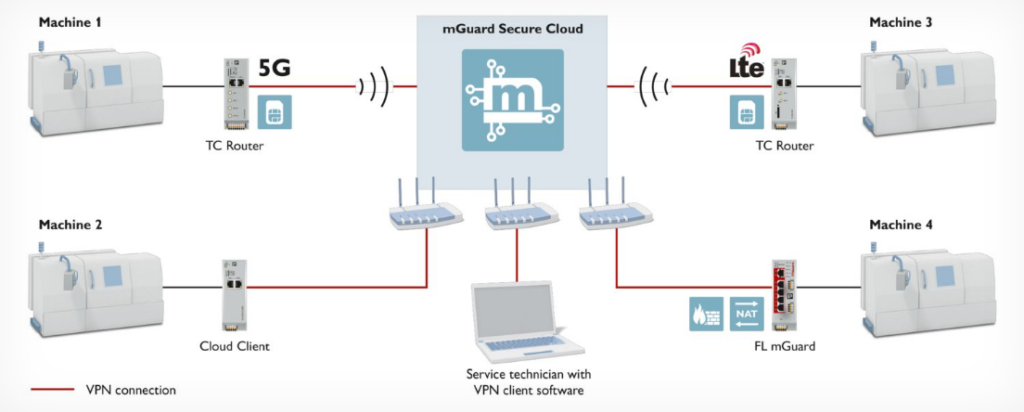
Alternatively, companies can choose to implement an internal VPN infrastructure if they would rather have more control over their remote maintenance activities. This strategy offers total control over data, hardware, and software platforms, enabling customisation and system administration flexibility. On the other hand, managing the infrastructure’s setup, use, and upkeep calls for IT competence.
Each type of VPN solution—cloud-based and internal—has advantages of its own, and which one to employ depends on the particular requirements and resources of the company. Businesses can improve their maintenance plans to ensure improved efficiency and dependability in their operations, regardless of whether they choose the control and independence of an in-house solution or the ease and scalability of the cloud.
Features of mGuard Secure Cloud:
- Easy to access without the need for any IT knowledge.
- It connects machines and systems through highly secure VPN tunnels, protecting against data loss and manipulation.
- Risk-free solution as it is possible to try for 30 days without any obligation.
- It supports computers with Windows, macOS, Linux and also mobile devices, such as Apple iPad and iPhone.
- It is a reliable solution that is designed to operate even in high-availability data centres worldwide.
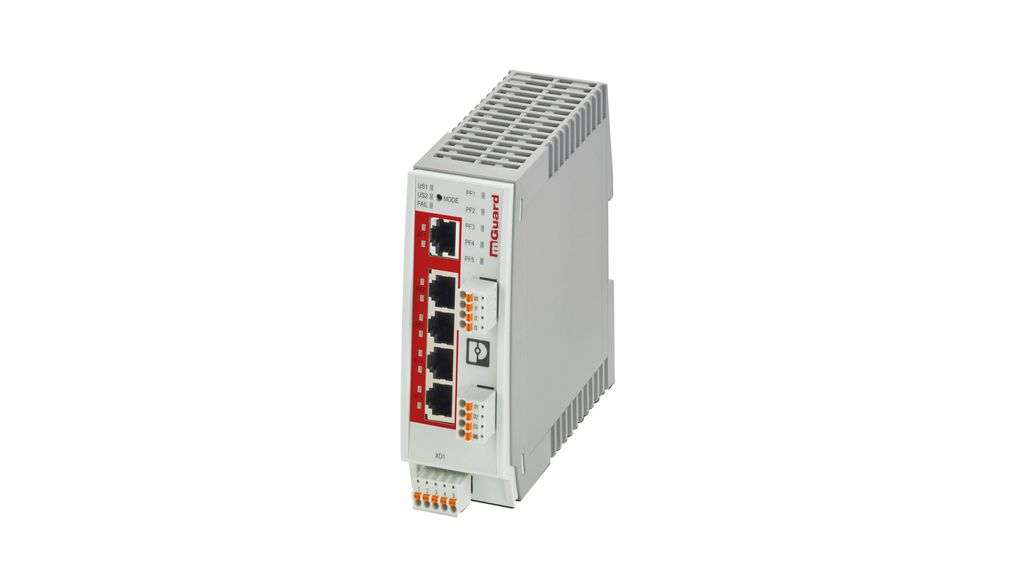
Moxa
Moxa is another well-known brand which provides industrial solutions for machine builders and original equipment manufacturers (OEMs). With their Moxa Remote Connect (MRC), it is possible to connect field devices, engineers, and application servers seamlessly.
For industrial applications, MRC is a user-friendly, secure, and adaptable networking solution that creates a smooth online connection between field equipment, engineers, and application servers. MRC Server, MRC Gateway, and MRC Client are all part of the system. The platform for managing connections between MRC Gateways and MRC Clients is called MRC Server. Remote sites with Ethernet-ready devices can connect to the MRC Client through the secure MRC Gateway. Through the use of software called the MRC Client, engineers can select whatever remote device they want to connect to from their laptop.
By providing engineers with on-demand remote maintenance, diagnosis, and troubleshooting, Moxa Remote Connect lowers security risks and costs by allowing engineers to create secure connections only when necessary. It reduces the need for onsite visits by enabling continuous remote monitoring of machine status, allowing engineers to make adjustments and resolve problems from a distance. Furthermore, Moxa Remote Connect makes it possible for machines located in various places to securely communicate with one another and share data just like they would if they were on the same local area network (LAN).
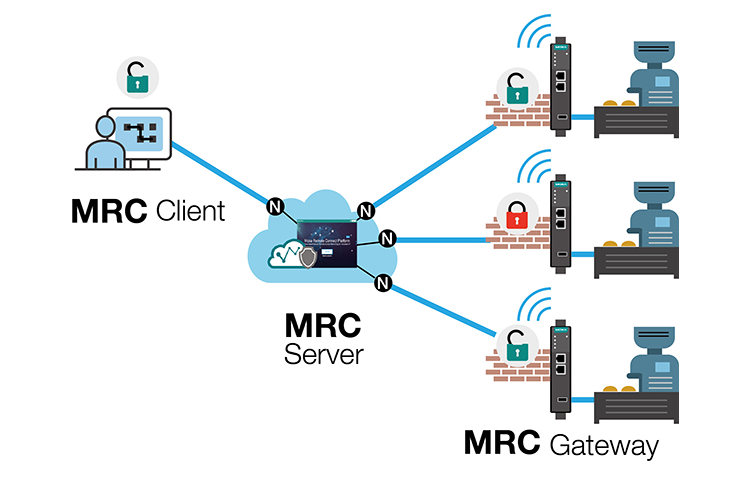
Features of Moxa Remote Connect solution:
- Machine operators can fully control machine access for on-demand maintenance service.
- With an embedded firewall, remote access is possible under whitelist control without disrupting local networks and field sites.
- VPN is not required for deployment.
- Supports existing IT cybersecurity policies.
- Less effort is required from IT engineers.
- Easy to run with plug-and-play operation.
- Changes to network configurations are not required at field sites.
- It is possible to connect with multiple field machines simultaneously via a virtual IP mapping scheme.
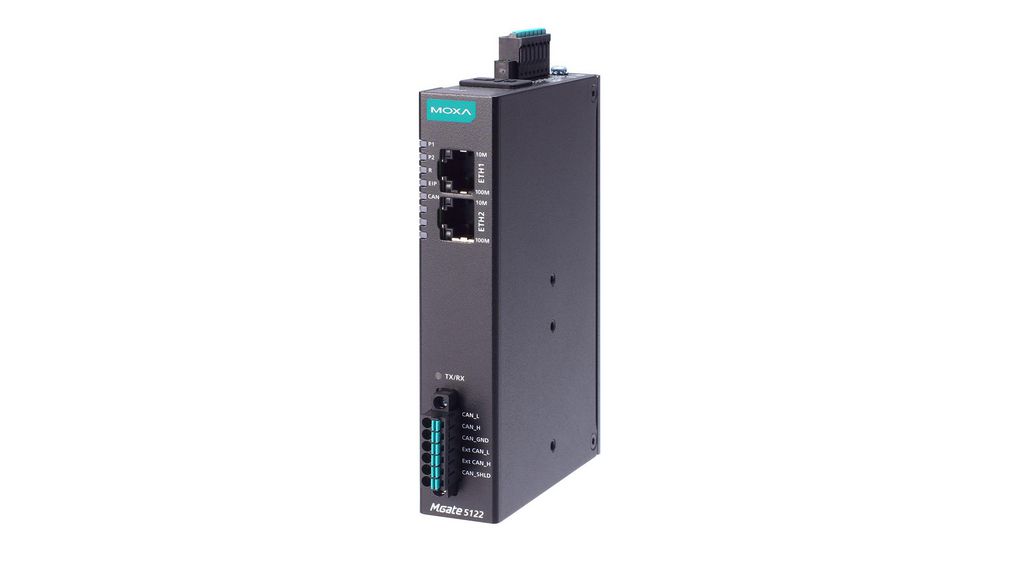
Omron
Omron is one of the leaders in industrial manufacturing automation. With a strong commitment to quality, innovation, and customer satisfaction, Omron has become a leader in the manufacturing automation industry. With the brand’s Remote Access Solution you may remotely monitor and troubleshoot your production performance. All the hardware and software components required for cost-effective maintenance that increases production output are included in the RT-series.
Features:
- Reduced travel costs with online remote maintenance access.
- Easy to deploy a high security certified remote access solution.
- Instantly improved customer service quality with remote access to all production equipment and rapid response time.
- Access to Sysmac Studio Platform and CX-ONE platform.
- Continuous monitoring of the effectiveness of equipment and machine-to-machine connectivity.

To connect RT-series to industrial devices, you need to get a network module or gateway and a software tool. Omron offers a complete solution for remote access to industrial devices. If you are looking for the right PLC or HMI, check out our article about the role of PLCs in industrial IoT, learn how to select the right HMI for your application or click the button below to purchase Omron products.
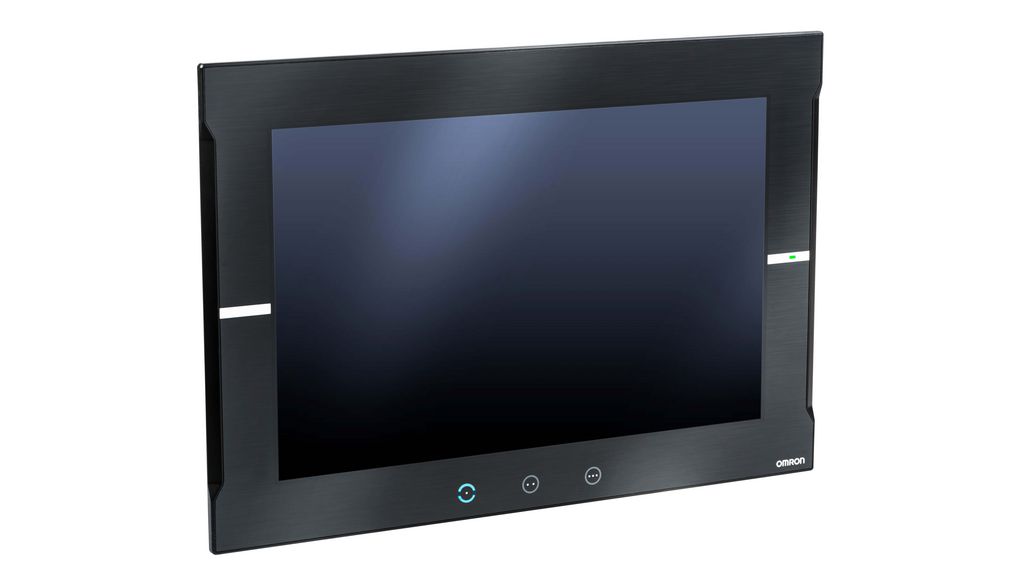

Best Practices for Cloud-Based Remote Maintenance
To successfully implement cloud-based remote maintenance, businesses must develop a comprehensive plan that encompasses both the technical and business aspects of the project.
1. Regular Monitoring and Analysis
For cloud-based remote maintenance to be as beneficial, it must be implemented with regular monitoring and analysis. To do this, use IoT sensors to gather data from all of your equipment’s critical points. Real-time analysis of this data via cloud computing will allow for the quick identification of any irregularities or performance issues. Regularly reviewing historical data will help you spot patterns and anticipate future breakdowns. Finally, creating feedback loops within the system will guarantee continuous improvement in data collection and analysis.
2. Proactive Maintenance Strategies
A proactive maintenance strategy greatly increases the efficacy of cloud-based remote systems. This entails using AI and machine learning technologies to anticipate equipment malfunctions before they happen. To avoid unanticipated breakdowns, it is important to carry out scheduled checks on a regular basis, even if there are no urgent issues with the system. In addition, compatibility and continued efficiency are guaranteed by ongoing evaluation and upgrading of equipment components based on performance data.
3. Training and Skill Development
Having the right personnel on your team is essential to making the most of cloud-based remote maintenance solutions. Your workforce will be able to operate contemporary automated systems with ease if they receive regular training on new technologies and maintenance methods. By strengthening their analytical skills, they will be able to use real-time data to make well-informed decisions. Also, promoting adaptability and problem-solving skills cultivates a culture of continual learning, which is necessary to stay up to date with developments in cloud-based and IoT technologies.
Future Trends in Cloud-based Remote Maintenance
A number of significant developments will drive the evolution of cloud-based remote maintenance as industries embrace digital transformation. Improved AI will make data analysis and decision-making easier, and more IoT connectivity will make the maintenance framework more automated. Also, the deployment of 5G will increase network throughput, facilitating quicker data transfer, and Augmented Reality (AR) will streamline challenging jobs by offering instantaneous guidance.
Additionally, energy-efficient maintenance techniques will be driven by an increasing emphasis on sustainability. These developments will boost system effectiveness and dependability while lowering maintenance risks and expenses. They are also essential for maintaining competitiveness in the changing industrial environment.
Switching to the Cloud in Maintenance
By leveraging the power of the cloud, IoT, and predictive analytics, businesses can achieve heightened operational efficiency, reduce downtime, and foster proactive maintenance strategies. This integration leads to significant cost savings and improved equipment longevity. As industries continue to navigate the paths of digital transformation, adopting cloud-based remote monitoring and maintenance solutions will become increasingly indispensable for staying competitive and agile in a technologically driven marketplace.










